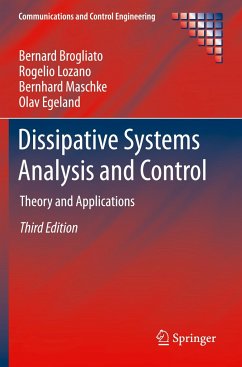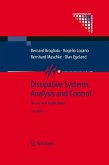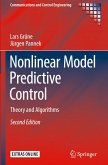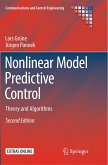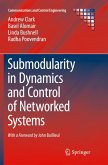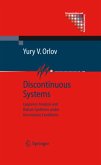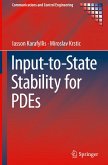The third edition of the now standard Dissipative Systems Analysis and Control presents a revised and expanded treatment of dissipative systems theory, constituting a self-contained, advanced introduction for graduate students, researchers and practising engineers. It examines linear, nonlinear and nonsmooth systems, with many examples in each chapter; occasional infinite-dimensional examples are also included. Throughout, emphasis is placed on the use of the dissipative properties of a system for the design of stable and robust feedback control laws or state observers. The theory is substantiated by experimental results and by reference to its application in illustrative physical cases (Lagrangian systems, passivity-based and adaptive controllers are covered thoroughly).
The third edition is substantially updated to accommodate new material within the existing chapter structure. The additions include:
· the introduction of negative imaginary transfer functions;
· the design of stable state observers that use passivity as a tool for their stability analysis;
· a new section on robust set-valued control of uncertain Lagrangian systems;
· extended section on discrete-time systems, especially the preservation of dissipativity after discretization;
. a thorough treatment of nonsmooth set-valued Lur'e systems well-posednees and stability;
. an extended chapter on the Kalman-Yakubovich-Popov Lemma; and
. over 1000 references.
The third edition is substantially updated to accommodate new material within the existing chapter structure. The additions include:
· the introduction of negative imaginary transfer functions;
· the design of stable state observers that use passivity as a tool for their stability analysis;
· a new section on robust set-valued control of uncertain Lagrangian systems;
· extended section on discrete-time systems, especially the preservation of dissipativity after discretization;
. a thorough treatment of nonsmooth set-valued Lur'e systems well-posednees and stability;
. an extended chapter on the Kalman-Yakubovich-Popov Lemma; and
. over 1000 references.
"This monograph presents comprehensive presentation general theory and applications of dissipative systems. The modern development of engineering and technology has a significant impact on this area of research. This monograph opens up new possibilities for many researchers in this field to approach the front line of research." (Anatoly Martynyuk, zbMATH 1432.93001, 2020)
From reviews for the first edition:
The book provides an extensive exposition of both the mathematics, physics motivation and control applications of passivity and dissipativity... the richness of a very impressive inventory of illustrating examples stands out as a point of excellence... Also outstanding is the large number of specialized journal type results and inventory of methods contained and, indeed, elaborated in detail in the book.
Automatica 41 (2005) 177 - 179 (Reviewer: Gilead Tadmor)
The book... is a unique monograph. It is an excellent book for its diverse technical contents as well as its clear presentation. The book presents a comprehensive and rigorous coverage of dissipative systems theory... including a collection of interesting experimental results. Analysis is rigorous and presentation is easy to follow. It is an excellent reference for graduate students, engineers and researchers.
International Journal of Adaptive Control and Signal Processing 18 (2004) 423 - 426 (Reviewer: Gang Tao)
This book excellently combines the theoretical outline including the mathematical foundations with lots of elaborate examples. There is almost no concept or consideration which is not illustrated by some calculation for a given systems... The solutions found by the authors are very instructive for readers interested in applications... This book is really to be recommended to those who seek a sound, well written and far-reaching introduction.
IoP Electronic Journals, Measurement Science and Technology 12 (2001) (Reviewer: Holger Kantz)
This monograph is a self-contained advanced introduction to the theory which is consistently supplied with numerous physical examples... It will be suitable for graduate students interested in the control of linear and nonlinear systems as well as for researchers and practicing control engineers who are interested in applying this theory in their applications.
Zentralblatt MATH 958 (Reviewer: Lubomír Bakule)
From the reviews of the second edition:
The monograph under review gives a comprehensive mathematical introduction to the analysis and control of systems with dissipative properties... The book concludes with an appendix summarizing essential mathematical background material and a rather comprehensive bibliography containing over 500 references... In summary, this book is a highly readable, authoritative, and comprehensive introduction to the theory of dissipative input-output systems... the authors make regular and recurring references to physical examples so as to effectively motivate the material.
Mathematical Reviews 2007k (Reviewer: Kevin A. Grasse)
"This book is focused to the development of direct Lyapunov method using input-output properties of controlled complex systems. ... The investigations are very useful to see how the dissipativity properties can be used todesign stable and robust feedback controllers basing on the fundament classical Lyapunov stability and Lyapunov functions. ... For graduate students, researchers and practicing engineers." (Yuri N. Sankin, Zentralblatt MATH, Vol. 1121 (23), 2007)
The book provides an extensive exposition of both the mathematics, physics motivation and control applications of passivity and dissipativity... the richness of a very impressive inventory of illustrating examples stands out as a point of excellence... Also outstanding is the large number of specialized journal type results and inventory of methods contained and, indeed, elaborated in detail in the book.
Automatica 41 (2005) 177 - 179 (Reviewer: Gilead Tadmor)
The book... is a unique monograph. It is an excellent book for its diverse technical contents as well as its clear presentation. The book presents a comprehensive and rigorous coverage of dissipative systems theory... including a collection of interesting experimental results. Analysis is rigorous and presentation is easy to follow. It is an excellent reference for graduate students, engineers and researchers.
International Journal of Adaptive Control and Signal Processing 18 (2004) 423 - 426 (Reviewer: Gang Tao)
This book excellently combines the theoretical outline including the mathematical foundations with lots of elaborate examples. There is almost no concept or consideration which is not illustrated by some calculation for a given systems... The solutions found by the authors are very instructive for readers interested in applications... This book is really to be recommended to those who seek a sound, well written and far-reaching introduction.
IoP Electronic Journals, Measurement Science and Technology 12 (2001) (Reviewer: Holger Kantz)
This monograph is a self-contained advanced introduction to the theory which is consistently supplied with numerous physical examples... It will be suitable for graduate students interested in the control of linear and nonlinear systems as well as for researchers and practicing control engineers who are interested in applying this theory in their applications.
Zentralblatt MATH 958 (Reviewer: Lubomír Bakule)
From the reviews of the second edition:
The monograph under review gives a comprehensive mathematical introduction to the analysis and control of systems with dissipative properties... The book concludes with an appendix summarizing essential mathematical background material and a rather comprehensive bibliography containing over 500 references... In summary, this book is a highly readable, authoritative, and comprehensive introduction to the theory of dissipative input-output systems... the authors make regular and recurring references to physical examples so as to effectively motivate the material.
Mathematical Reviews 2007k (Reviewer: Kevin A. Grasse)
"This book is focused to the development of direct Lyapunov method using input-output properties of controlled complex systems. ... The investigations are very useful to see how the dissipativity properties can be used todesign stable and robust feedback controllers basing on the fundament classical Lyapunov stability and Lyapunov functions. ... For graduate students, researchers and practicing engineers." (Yuri N. Sankin, Zentralblatt MATH, Vol. 1121 (23), 2007)

